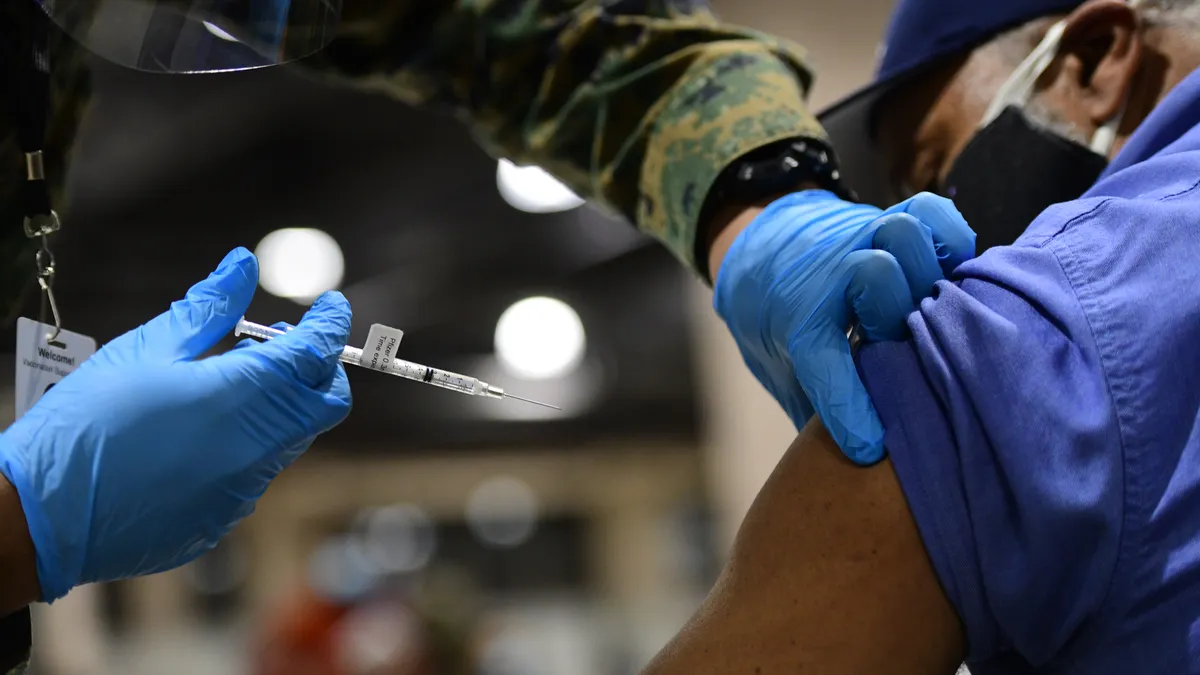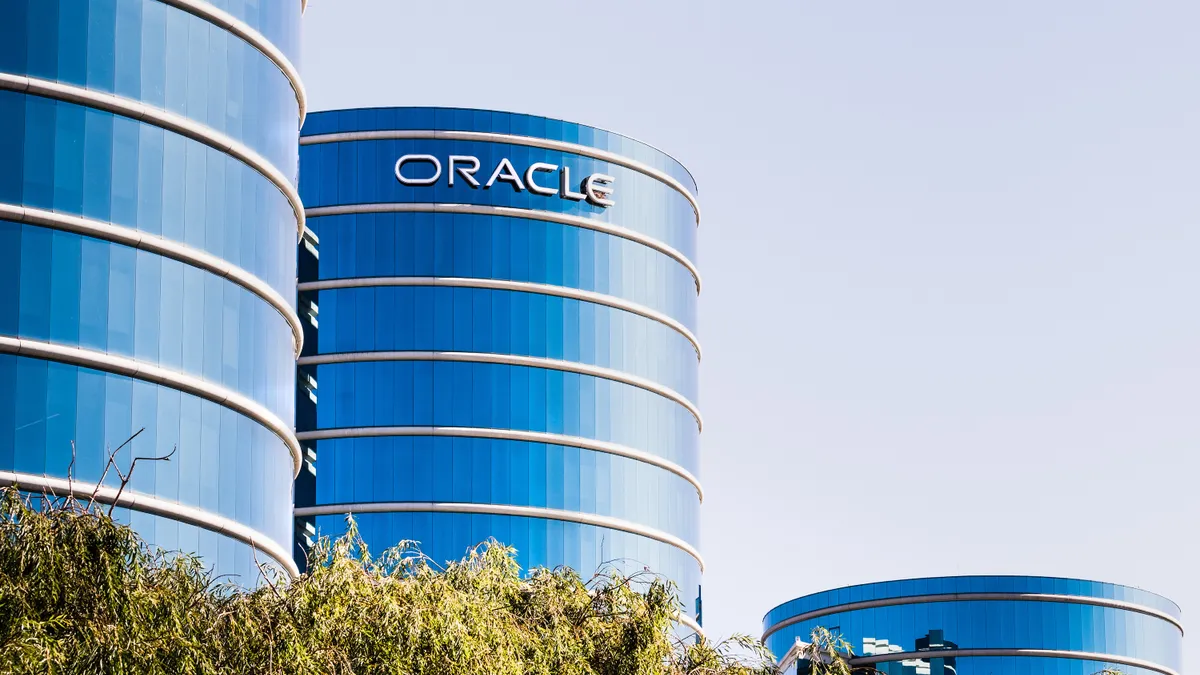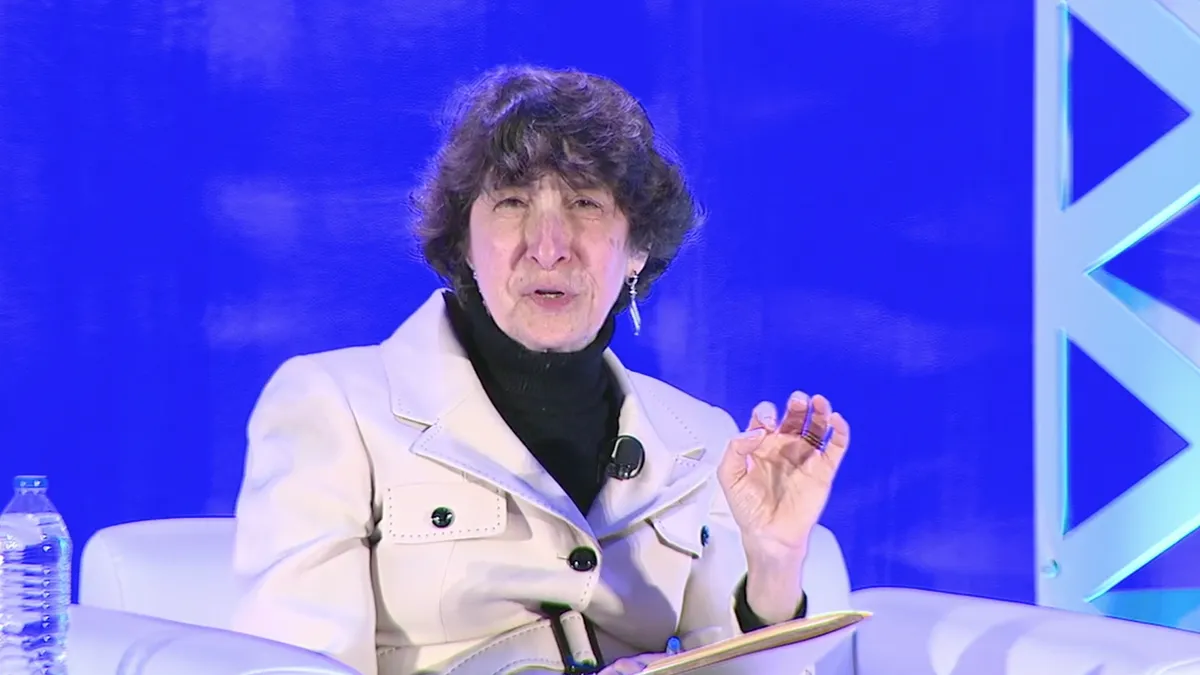Susan Garfield is chief public health officer and Yele Aluko is chief medical officer for EY Americas. Views are the authors' own.
A year into the pandemic, the Centers for Disease Control and Prevention is reporting that we will go from COVID-19 vaccine supply constraints to surplus in a matter of weeks. That means it's time to figure out how to get as many of our employees vaccinated as possible, to facilitate safe workplaces and return to a new normal.
When the vaccines first became available to priority groups in January, many assumed that all essential employees would seize the opportunity to get vaccinated to protect themselves and their communities — but the data shows it didn't quite happen that way. In fact, despite their increased exposure risk, many nursing home employees, first responders and health care providers opted not to receive the vaccine.
And as we now see a broader swath of the population getting access to vaccination, there are clear steps employers can take to incentivize more comprehensive employee vaccination. Despite some initial concerns, some are considering more directive options via vaccine mandates, while others are rolling out incentives to reinforce behaviors or overcome specific hurdles, including paid time off, bonuses, schedule flexibility, gift cards and travel reimbursement for employees who furnish proof of vaccination.
As an employer, what intervention is right for you and your organization? In a nutshell — one that is aligned with the specific needs of your employee population.
First, consider vaccine hesitancy and how it may be expressed among your workforce. This hesitancy may be sparked by fears of potential long-term side effects, skepticism about the speed of authorization, political misgivings, concerns about fertility or long-held distrust of the medical profession due to historical disenfranchisement. By contrast, others may be reluctant to pursue vaccination until a larger percentage of elderly and immunocompromised populations have been inoculated. Still others may choose not to get vaccinated because it is seen as inconvenient or logistically challenging.
To understand whether any of these beliefs exist among your employees, now may be a good time to conduct "pulse-check" surveys on employee vaccine sentiments, vaccination plans and what they perceive as hurdles to vaccination.
Nationally, many employers have rolled out vaccination incentive programs that offer both general rewards for getting vaccinated, as well as more targeted programs to overcome specific hurdles. One major hospital system in the South has offered its employees bonuses tied to vaccination, continuing the resiliency bonuses it provided at the start of the pandemic. In rural America, where vaccine hesitancy is quite common, several meatpacking plants have offered complimentary, on-site vaccination along with financial incentives to facilitate uptake.
Going a step further, a large grocery retailer is providing cash bonuses to employees who get vaccinated, as well as a separate cash bonus for those who are unable to get the vaccine due to religious or medical reasons if they complete a health and safety education course. Across industries, many employers are also offering between two and four hours of paid time off, or are teaming with rideshare services to bridge the transportation gap for employees. Others are permitting excused absences within 48 hours of vaccination for those who experience side effects.
The incentives and supporting programs that work best for your organization will depend on the specific challenges you are attempting to overcome.
Keep in mind that education and engagement, versus incentives alone, are key to overcoming vaccine hesitancy. We know now that when it comes to vaccination, clinical voices are the most trusted. Find clinicians in your community who can be trusted sources of information, who represent different members of your employee base and who can serve as resources when your employees have questions. Some companies have chief medical officers who can fill this need; others can team with health systems or leverage public health communications to fill this void. Additionally, to compound the impact of your programs, reinforcing desired behaviors also can be beneficial. For example, celebrating employees who have been vaccinated can both entice others to do the same and reward those who have completed their course.
Whether you leverage mandates or incentives, make it easy for your employees to get vaccinated. Partner with pharmacies or other provider organizations to support on-site vaccination clinics or to facilitate in-store appointments. For those with transportation constraints, consider facilitating access to ride-share services to and from vaccination sites. Helping to provide equitable access across your employee population will require that the programs you create meet your employees' needs and include a specific focus on those most at-risk or hesitant. To that end, you will need to recognize and identify when cultural factors are influencing beliefs, which will help you target incentives more effectively.
The next few months are certain to be challenging, but employer participation in vaccination advocacy efforts are likely to be valuable accelerators of uptake and our collective drive toward herd immunity. As you break down barriers to employee vaccination, continue to capture best practices and lessons learned to inform future health and wellness programs.




















